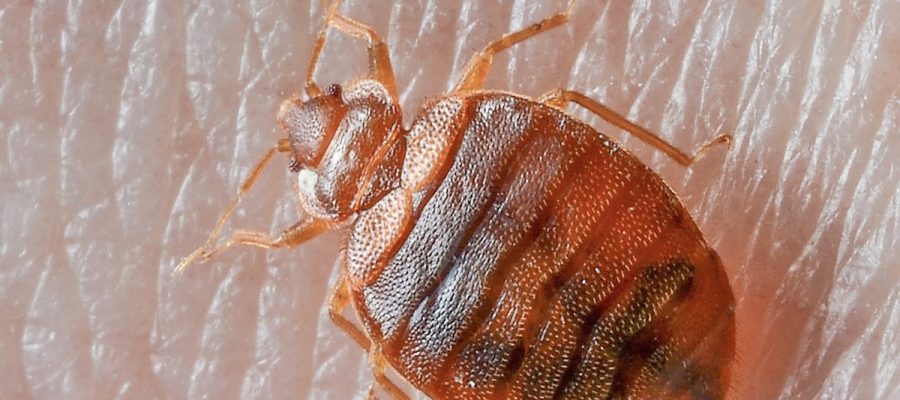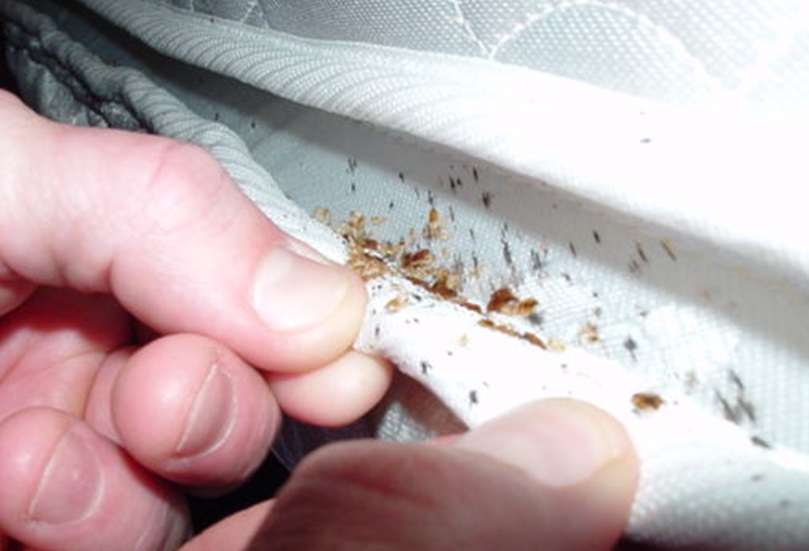How to Tell If You Have Bed Bugs? The Most Unmistakeable Signs Here
- July 1, 2019
- in Pest Control
- by Ashley Dando
- 160
- 0

Goodnight, sleep tight, don’t let the bed bugs bite!
What was a funny, nonsensical jingle when we were put to beds as kids is now a reality. Bed bugs, which most kids knew as the imaginary bugs in their beds, are actually bugs in their (or our) beds now.
In the early 1900s, they were pretty common. However, with the creation of strong pesticides, they were mostly eradicated. So much so that new generations of pest control professionals didn’t even know how to deal with bed bugs.
Now, they’re back — and with a vengeance.
Keep reading to learn how to tell if you have bed bugs and how to get rid of them.
Bed bugs are small, brown, oval insects, about the size of an apple seed. They feed on the blood of humans and animals. Adult bugs are red and swollen after feeding.
They don’t fly, but they can move very quickly. Because of their small size, they can easily fit into tiny spaces. They like box springs, mattresses, bed frames, and headboards. They like these spots because they have easy access to humans to bite during the night.
Over time, though, they often scatter throughout the bedroom, finding their way into small crevices and spreading to nearby rooms. They aren’t a sign of having a dirty home, either. Because they feed on blood, they can be found even in clean homes. They don’t discriminate.
The most common way they get into your home is as a stowaway in luggage, clothing, or used beds or couches. When you stay at a hotel, check the room for bed bugs to make sure you’re not bringing them home with you. A few bed bugs can turn into an entire home infestation.
Since bed bugs are so small and hide in tiny spaces and crevices, you might not see them — but you’ll definitely know they’re there if you see any of the following signs.
If your bedroom suddenly has an unexplained and new musty odour, it could be a sign of bed bugs.
Because they excrete pheromones, when you have a large infestation of them, the smell can be extremely strong.
When bed bugs bite humans to feed on their blood, they inject an anticoagulant, which helps our blood flow easier. When this happens, a drop of blood forms at the feeding site. This can then transfer to your sheets or pillowcase.
You also might inadvertently squish a bed bug that has finished feeding and is swollen with blood. This could also result in blood spots in your bed. If you wake up and there are mysterious blood specks on your sheets, check for bed bugs.

Not everyone reacts to bed bug bites, so while you may have the spots, they might not be itchy.
Bed bugs usually feed at night, so you don’t typically feel them bite. You just wake up to small red spots, that may or may not be itchy, and are often in a line.
The bites are most commonly found in areas where there are blood vessels, like your hands, legs, neck, and arms. The pattern (in a line) is a telltale sign, because most other bug bites, like fleas or mosquitoes, don’t bite in that sort of pattern.
As if the discussion of bed bugs couldn’t get grosser, they also might leave behind fecal stains on your mattress.
If you find small, rust-coloured spots on your mattress, it’s possible they are from bed bugs. The spots have an unpleasant smell and look like a small spot made with a felt-tipped market.
The fecal stains aren’t limited to your mattress, either. You might notice them on your walls. Common sites on your walls are in the corners or behind picture frames or other wall hangings.
Bed bugs don’t only leave behind fecal matter. They also leave behind their shed skin and their eggs.
As part of their life cycle, they shed their skin and leave it behind, typically in their favoured hiding places. Look for tan skins in your mattress creases, seams in furniture, and along your home’s baseboards.
Small white spots in your furniture joints, mattress creases or dimples, and other soft surfaces are likely to be bed bug eggs. If you spot these, do a close inspection of the rest of the furniture and you might find the bugs themselves.
As a part of the bed bug life cycle, they shed their skin. Once cast aside, the skin is tan in colour, often found in the areas you might find bed bugs themselves. Such areas include mattress creases, furniture seams, and along baseboards.
If your friends or neighbours have bed bugs and you visit their home or even come into close contact with them, you might bring the bugs home to your own house.
They can spread from person to person, so if you visit a home or hotel room that has them, they might hitch a ride back to your house.
Second-hand furniture, like used mattresses or couches, is one of the most common vehicles for bed bugs to get to your home. Even if your used furniture is coming from a house that is spotless, it is still susceptible to bed bugs.
If you plan to bring any second-hand items into your home, think about the consequences and whether the trauma and expense of a bed bug infestation is worth it. It might be wise to stick to brand new mattresses and couches!
Now that you know how to tell if you have bed bugs, be on the lookout anytime you spend the night at a hotel, the home of a friend or family member, or visit someone who may have bed bugs.
While no one wants bugs in their bed (or anywhere else in their home!), the problem is preventable.
If you do suspect an infestation, contact us right away! Treatment by professionals is necessary.
Array